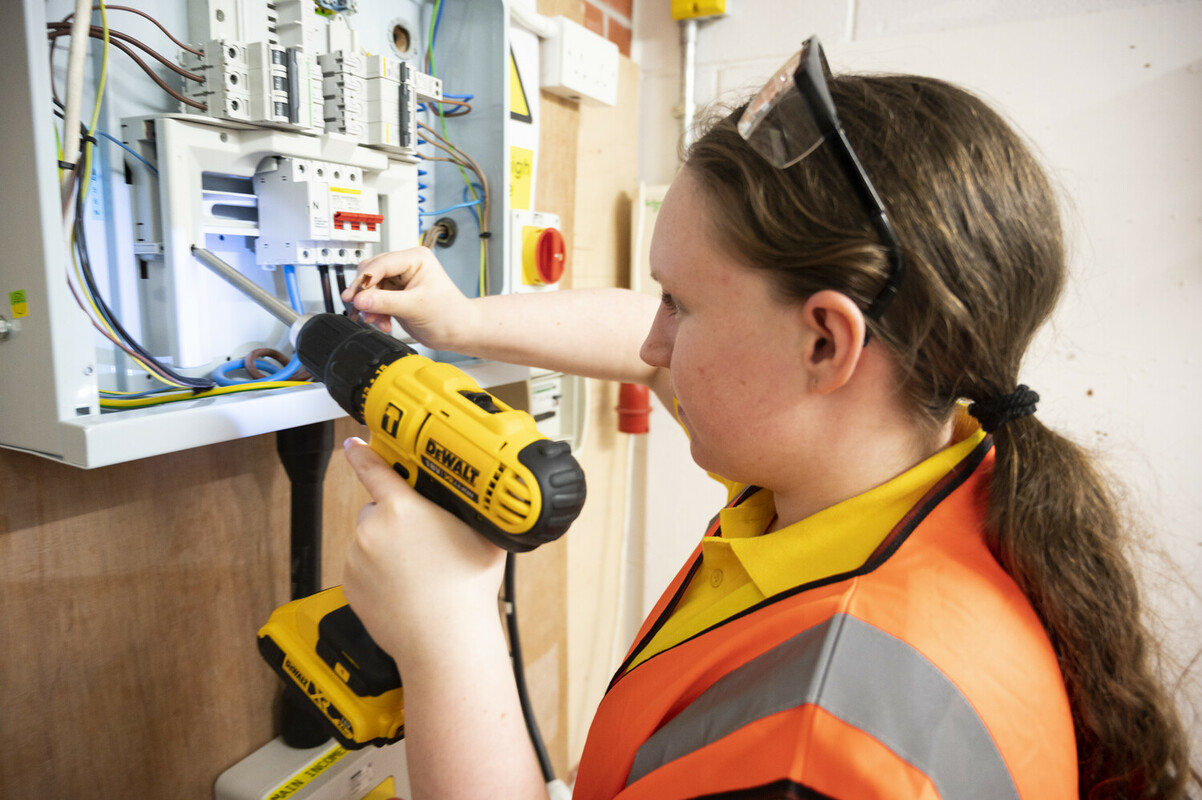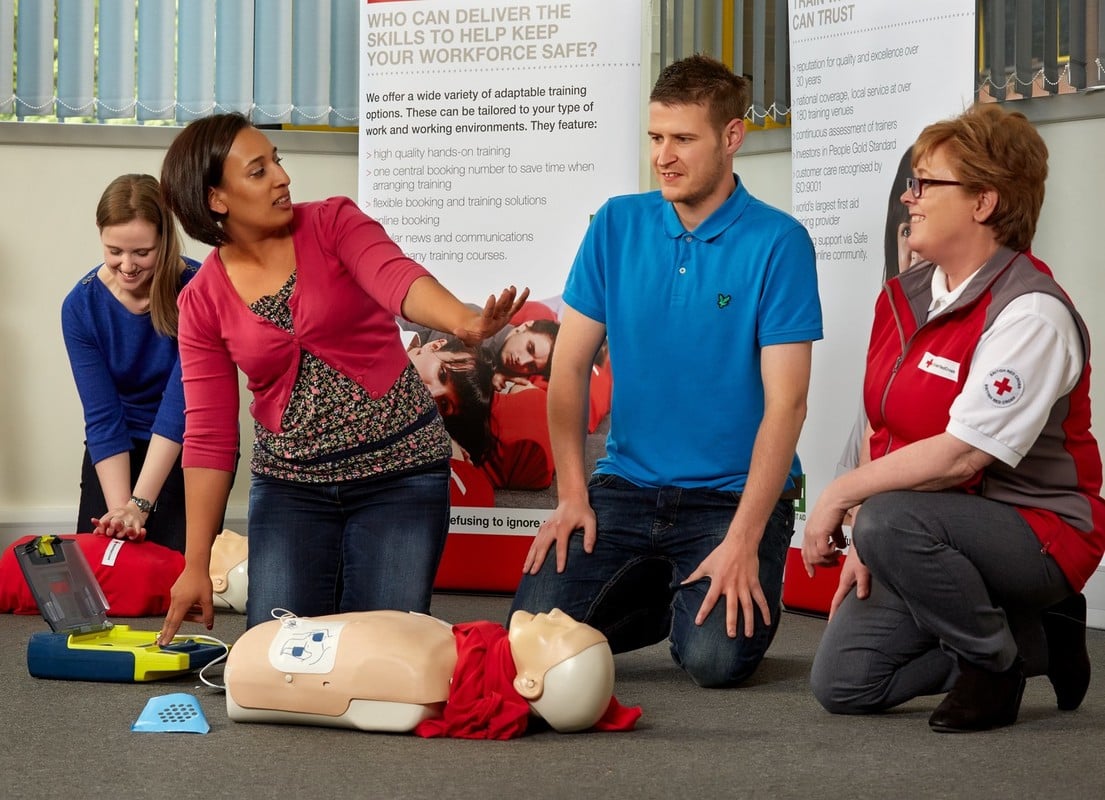In recent years, hybrid working has rocketed in popularity. More people than ever before are now splitting their working hours between home and the office. While hybrid working offers benefits to both employees and employers, it can have a major impact on the first aid provision you need to offer. In this blog post we look at what hybrid working and lone working mean in terms of first aid in the workplace, also helping you to interpret how the first aid regulations may affect your responsibilities.
What is hybrid working?
Hybrid working combines elements of both remote work and traditional in-office work. In a hybrid working model, employees have a certain amount of flexibility to divide their working hours between their employer’s premises and a remote location, usually their home.
During the COVID-19 pandemic, lockdowns meant many workers had no option but to work from home. During this period many organisations and individuals found that remote working resulted in significant benefits.
Employers recognised that many job roles could be effectively performed from outside the traditional office environment without sacrificing productivity or efficiency. As a result, growing numbers of businesses began to offer hybrid working. Some found that it enhanced employee retention, helped attract top talent from a broader pool and reduced office space requirements.
Many employees, on the other hand, found that hybrid working allowed them to enjoy a better work-life balance, reduced their commuting time and gave them more control over their work. Often, workers discover that hybrid working improves both their job satisfaction and well-being.
While hybrid working has many benefits, it does have an impact on first aid provision. In particular, when varying numbers of employees are working remotely, it is not always possible to know who is onsite. This means employers need to find ways of ensuring there are always sufficient numbers of trained first aiders in the workplace, as well as making sure remote workers have access to some form of first aid provision.

What is lone working?
Lone working refers to situations where an employee carries out their work without close or direct supervision and without immediate access to colleagues.
In the context of hybrid working, lone working is the portion of the working week that an employee works alone from home or another remote location. However lone working also occurs when individuals undertake off-site visits or work non-standard hours when other employees are not present.
While lone working offers flexibility, it can also pose unique safety challenges, as individuals may face increased risks without immediate support in case of an emergency. Again, this has an impact on the type of first aid provision that employers need to consider, to ensure safety for lone workers.
For example, in the case of a bus driver, they would face first aid challenges as they could be faced with a situation whereby their passengers are not equipped with the necessary qualifications to assist them in a first aid emergency.
Ensure all workers know how to react in an emergency
Use our course finder and discover the most relevant first aid course for your team, regardless of their role or location.
How do hybrid working and lone working impact on first aid provision?
Both hybrid working and lone working can have significant impacts on first aid provision. Key things that employers need to consider include the following:
1) The availability of first aiders
In a hybrid working environment, employees split their time between remote work and the office. This can lead to fewer first aiders physically present on-site at any given time. If this happens, it could result in delayed response times during emergencies because fewer numbers of trained individuals are available to provide immediate first aid assistance.
Employers can manage this challenge by training additional first aiders and operating a rota system for hybrid working that ensures sufficient numbers of first aiders are onsite at all times. Our blog on how many first aiders are required for a workplace can help you get this right and take into account other factors such as employee absence, shift working and breaks during the working day.
If you find you do need additional first aiders, 1-day Emergency First Aid at Work training equips people with the skills and knowledge they need to treat a wide variety of injuries and medical conditions. A 3-day First Aid at Work course gives learners more in-depth knowledge that is suited to higher-risk environments.
If you already have first aiders who have completed either course, they can refresh their skills with a first aid annual skills update course.
If you find you do need additional first aiders you have the following options:
- 1-day Emergency First Aid at Work training equips people with the skills and knowledge they need to treat a variety of injuries and medical conditions associated with smaller and lower-risk working environments.
- A 3-day First Aid at Work course gives learners more in-depth knowledge that is more suited to higher-risk environments.
- A 2-day First Aid at Work Requalification course for those who need to renew a previously attained 3 day first aid at work qualification to continue to be a first aider within the workplace.

2) Supervision and safety for lone workers
When an employee works alone without close supervision or immediate access to colleagues, this poses additional risks. In the absence of immediate assistance, an injured or ill lone worker may face delays in receiving first aid, potentially increasing the severity of the situation.
There are various ways employers can mitigate the risks of lone working. Firstly, they can make sure all employees who work alone have access to a first aid kit. Secondly, they can issue workers with phones that can be used to call for assistance when necessary. Thirdly, they can make sure that any equipment an employee uses is safe and unlikely to cause injury.
For example, while annual PAT testing for electronic items such as laptops is not a legal obligation, it is advised to conduct these checks. Employers could also issue ergonomic chairs and computer equipment to reduce the risk of musculoskeletal injuries.
While it is unlikely that you will be able to offer all employees first aid training, you can make sure that they have the British Red Cross app on their smartphones. This can help them develop first aid knowledge and give them the confidence and skills to act in an emergency.
Unsure which first aid training course is right for your team?
Use our course finder tool now to ensure your team are enrolled on the right course for your business.
Communication challenges
In a hybrid working arrangement, employees may be spread across different locations, making it more challenging to communicate and raise the alarm in case of an emergency. Quick and effective communication is vital during a first aid situation to ensure that appropriate assistance is provided promptly.
As an employer, you can use a variety of techniques to manage communication challenges. For example, you can send workers a daily email bulletin to let them know who designated first aiders are for that day, along with contact details.
Regular training sessions and emergency drills can familiarise employees with communication protocols and first aid procedures. Conducting simulations helps employees practise how to respond effectively during a real emergency, regardless of who is in the building that day.
You can also implement notification systems such as emergency buttons, alarms or dedicated communication channels that are specifically designed for alerting responders during first aid emergencies.
What does hybrid working mean for your first aid provision?
You have seen that hybrid and lone working can have a significant impact on your first aid provision. Without action, it can mean that you do not always have sufficient first aiders on your premises. It can also lead to communication challenges, reduced supervision and support as well as issues with psychological wellbeing.
If you have recently moved to a hybrid working model, it is essential to revisit your first aid needs assessment. This will help you identify any new hazards that have been introduced by hybrid working practices and find ways of managing their risks.
It also allows you to update your first aid policies and procedures to include guidelines specific to hybrid working arrangements, helping to ensure you continue to comply with the requirements of the Health and Safety (First-aid) regulations 1981.
Topics: First Aid





